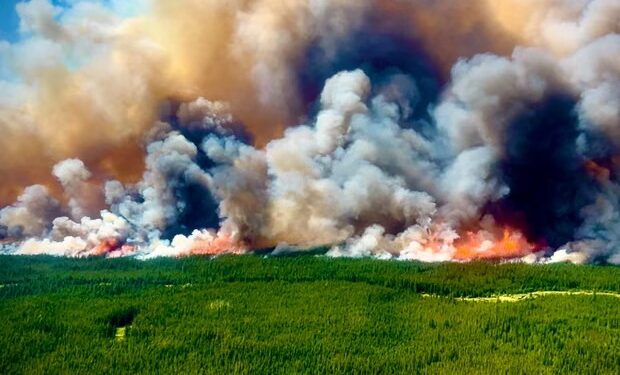Toronto – Canada’s 2025 wildfire season has upended traditional patterns, with blazes now burning across regions that have historically been spared from the country’s most destructive fires. While the western provinces of British Columbia and Alberta have long been the epicentre of wildfires, this year’s most severe incidents have been concentrated in the eastern prairies and Atlantic regions, a stark indication that climate change is fundamentally altering the nation’s fire response and preparedness.
Shifting epicentre of destruction
The shift in the geography of the fires has been pronounced. According to the Canadian Interagency Forest Fire Centre, Saskatchewan and Manitoba have been the worst-hit provinces, accounting for more than 60% of the total area burned in Canada this season. Fires have also seized strained resources in Atlantic Canada, particularly in Newfoundland and Labrador, where officials are struggling to contain out-of-control blazes. Fires have even been confirmed in southern Ontario’s Kawartha Lakes region, a popular tourist destination less than 100 miles north of Toronto, which has not seen blazes of this scale in generations. The change is attributed to prolonged drought, high temperatures, and intense winds, which are creating tinder-dry conditions in areas once considered low-risk.
Impact on communities and response
The new fire patterns are catching communities and emergency services unprepared. Many firefighters in the eastern provinces are trained for urban and structural fires and lack the specific expertise and equipment needed to combat large-scale wildland blazes. This has led to an increased need for inter-provincial and international assistance to manage the crisis. The rising threat in more populated areas is also leading to new challenges for officials, including mass evacuations, widespread road closures, and prolonged air quality alerts for millions of people. In response, provincial governments, including Newfoundland and Labrador and Nova Scotia, have implemented temporary bans on off-road vehicles and other activities in forested areas to mitigate human-caused fire risks.
A new reality for Canada
The 2025 fire season, already on track to be one of the worst on record, is forcing a fundamental rethink of Canada’s long-term wildfire strategy. Experts and officials are calling for a national approach to preparedness, including updating building codes, investing in fire-resistant infrastructure, and increasing the capacity of firefighting agencies across the country. While human activity is often the source of ignition, scientists have made it clear that climate change is the primary factor creating the conditions for fires to grow bigger, faster, and more destructively. The fires are a stark warning that what was once considered “extreme” seasonal fire activity is fast becoming the new normal, requiring an immediate and decisive shift from reactive suppression to proactive management and mitigation.
REFH – Newshub, 18 August 2025


Recent Comments